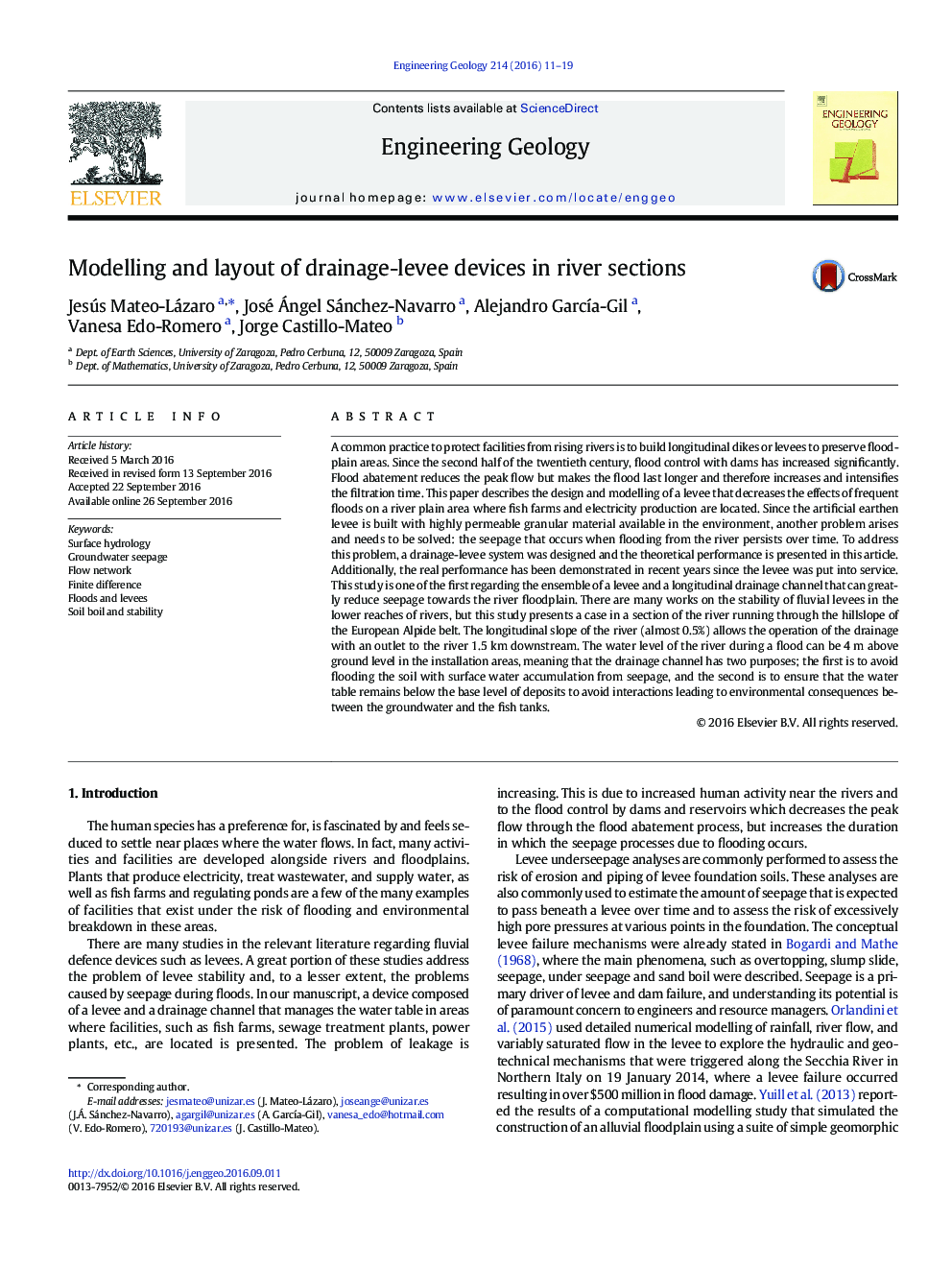| کد مقاله | کد نشریه | سال انتشار | مقاله انگلیسی | نسخه تمام متن |
|---|---|---|---|---|
| 4743038 | 1641771 | 2016 | 9 صفحه PDF | دانلود رایگان |
• Dams increase the duration of floods and seepage time across levees is also increased.
• Drainage-levee devices decrease environmental risk for facilities built beside rivers.
• Drainage-levee device allows the development near rivers during prolonged floods.
• Modelling leads to suitable designs compatible with human needs and the environment.
• Modelling requires assembling a wide range of studies closely connected to each other.
A common practice to protect facilities from rising rivers is to build longitudinal dikes or levees to preserve floodplain areas. Since the second half of the twentieth century, flood control with dams has increased significantly. Flood abatement reduces the peak flow but makes the flood last longer and therefore increases and intensifies the filtration time. This paper describes the design and modelling of a levee that decreases the effects of frequent floods on a river plain area where fish farms and electricity production are located. Since the artificial earthen levee is built with highly permeable granular material available in the environment, another problem arises and needs to be solved: the seepage that occurs when flooding from the river persists over time. To address this problem, a drainage-levee system was designed and the theoretical performance is presented in this article. Additionally, the real performance has been demonstrated in recent years since the levee was put into service. This study is one of the first regarding the ensemble of a levee and a longitudinal drainage channel that can greatly reduce seepage towards the river floodplain. There are many works on the stability of fluvial levees in the lower reaches of rivers, but this study presents a case in a section of the river running through the hillslope of the European Alpide belt. The longitudinal slope of the river (almost 0.5%) allows the operation of the drainage with an outlet to the river 1.5 km downstream. The water level of the river during a flood can be 4 m above ground level in the installation areas, meaning that the drainage channel has two purposes; the first is to avoid flooding the soil with surface water accumulation from seepage, and the second is to ensure that the water table remains below the base level of deposits to avoid interactions leading to environmental consequences between the groundwater and the fish tanks.
Figure optionsDownload as PowerPoint slide
Journal: Engineering Geology - Volume 214, 30 November 2016, Pages 11–19
